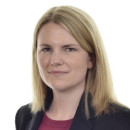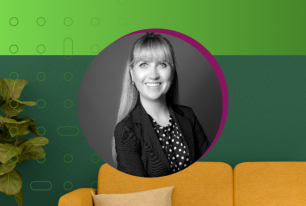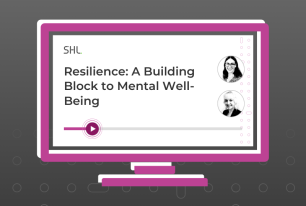When Home Becomes Work—A Reinvention of Our Working Lives
A blurring of personas presents opportunity to reinvent our working lives—for the better.
Share
Over the past year, our personas have collided. The corner in the kitchen carved-out as a work-station—a place for video calls; for designing new slide decks; where children appear looking for crayons or asking for another snack; and thought processes are interrupted by the beep of the washing machine or ring at the door. The strained apologies or simple switching off from video—something we have all grown very accustomed to—but are we really comfortable with it?
New Financial Times research shows that 38% of Brits are “highly anxious” and 28% are “lonely most of the time.” A recent Harvard study found that since 2020, 89% of employees believe their work-life is getting worse, 85% said their well-being had declined, and only 21% rated their well-being as ‘good’.
Throughout this period, many emotions have been suppressed. ‘Emotional labor’ is how psychologists describe this management of emotion with individuals ‘surface acting’ (or faking emotions) to project perceptions of enthusiasm, control, confidence, or show support for another person. Multiple studies have found that those engaging in surface acting are more likely to experience stress (e.g. Brotheridge & Lee, 2003). The dissonance we feel between experience and the emotion expressed poses longer-term damage for the individual themselves.
Experiencing a disconnect
The extreme change, for many, in work environments has contributed further to feelings of dissonance. Those who thrive on interaction, in-person collaboration, the social side of work, have had to work in isolation—video calls providing a poor substitute for much of the natural human interaction they crave.
Many years ago, I completed a piece of research into the impact on well-being and job satisfaction when individuals experience a difference between their current personality type (actual) and the personality traits they wished they had (desired). Firstly, it was remarkable how many people desired the perceived confidence and control of extraversion and the structure and planning of conscientious personalities. Secondly, the study found that those who expressed misalignment between their current personality and their desired personality reported lower levels of health, and the greater the misalignment, the greater the impact on health.
The personality preferences we display at work might not always be entirely consistent with those we express at home. The core (e.g. being extroverted or introverted) is likely to remain consistent, but how we behave with family and friends can often present differently to that with colleagues. Our days have become snippets of multiple role-playing, as the natural handovers between personas have merged.
Those who expressed misalignment between their current personality and their desired personality reported lower levels of health, and the greater the misalignment, the greater the impact on health.
These factors have created levels of pressure and anxiety most of us have not encountered before. If you find you are missing the commute into work or getting home after a long day in the office and chatting about your day, you are likely hankering after the cues that divide and structure not just your day, but the personas you play. The frantic mornings getting everyone and everything out of the house ready for the day—perhaps this served a purpose? The points of handover are clear—dropping husband at the train station (wife—tick); saying goodbye to children at the school gate (mom—tick); and walking into the office with one primary persona in focus (employee—tick).
As home has become work, the personas we are used to sharing in isolation have morphed, creating tension and discomfort or anxiety in some cases. The pressure to surface act and constantly switch between our personas has increased.
Life before, however, was not all rosy either. This enormous work or life experiment has also shown us that the way we used to work and organize our lives had its flaws. Employees feeling obliged to leave their personal lives and personas at the front door of the office places great demands on emotional labor and was already contributing to a huge global health and well-being challenge.
A trigger to reinvent
If nothing else, as employees and leaders in organizations, this level of disruption brings great opportunity to reinvent and build organizations, enabling a healthy balance. Our challenges now are: to navigate the blending of office and home working; to establish psychologically safe cultures where individuals feel they can be themselves and be fairly recognized for their contributions now and potential to do more in the future; and to intrinsically link commercial outcomes with purpose and social responsibility.
The first test to use what we have learned to shape the world of work will come as economists predict a significant rise in spending as retail, hospitality, travel and leisure will make a welcome return. As societies begin to open-up again, so will demand, and we are likely to see a surge in recruitment and roles advertised.
Most do not wish to return to the metaphorical clocking in and out culture, rather seeking trust and empowerment to enable the next leap in a healthy and balanced way—towards a continuum of life and work. The coping methods—to build resilience and provide mental and physical well-being support—will only get us so far. Let’s make our collective experiences to re-design experiences of work such that they serve to energize and sustain, especially as we live and work for longer.
Contact us to learn how we can help you thrive in the remote work environment.









